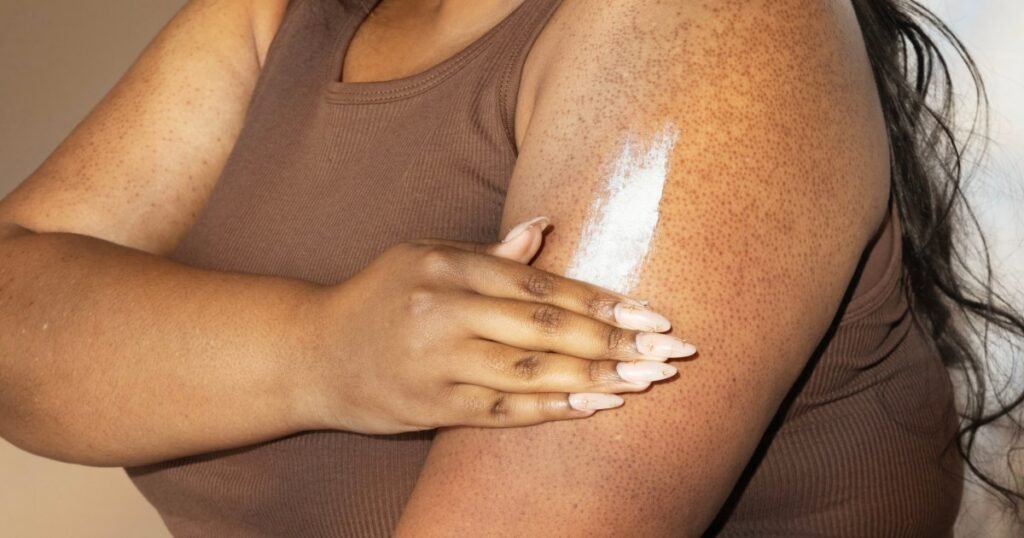Understanding Keratosis Pilaris: Causes, Treatments, and Expert Recommendations
If you’re experiencing rough, bumpy skin, particularly on your arms and thighs, you’re not alone. Keratosis pilaris, often known as “KP,” is a common skin condition that affects around 50% to 80% of adolescents and 40% of adults at some stage in life, as noted by the Cleveland Clinic.
What Is Keratosis Pilaris?
Keratosis pilaris manifests as small bumps resembling goosebumps or “chicken skin.” These raised spots develop due to an accumulation of dead skin cells clogging hair follicles. They may present as red, white, or skin-colored bumps, often appearing on the upper arms, thighs, and buttocks.
- Common Descriptions:
- "Goosebumps"
- "Strawberry skin"
- "Chicken skin"
Dr. Naveed Sami, a certified dermatologist, explains that KP results from excess keratin production within hair follicles, which forms the characteristic bumps. Though these blemishes are typically not painful or itchy, they often pose aesthetic concerns for many.
Causes of Keratosis Pilaris
- Genetics: KP is predominantly hereditary, often seen in individuals with a family history of the condition or those prone to eczema.
- Hormonal Fluctuations: Symptoms can worsen during puberty, menstruation, or pregnancy.
- Environmental Factors: Conditions such as low humidity in winter can exacerbate symptoms.
Dr. Michele Farber emphasizes that while KP is chronic and incurable, it often improves with age.
Effective Treatments for Keratosis Pilaris
While there is no definitive cure, many over-the-counter treatments can help smooth rough skin and reduce the appearance of KP. The best approach combines exfoliation and moisturization.
Key Ingredients to Look For:
- Exfoliants: Chemical exfoliants like salicylic acid, lactic acid, and urea effectively remove dead skin cells.
- Hydrating Agents: Ingredients such as glycerin, hyaluronic acid, and ceramides help manage symptoms and retain moisture.
- Anti-Inflammatory Components: Niacinamide aids in reducing redness and inflammation.
Recommended Treatments for Keratosis Pilaris
Below are some of the top products endorsed by dermatologists for managing keratosis pilaris symptoms:
Best Overall
CeraVe SA Lotion
- Key Ingredients: Salicylic acid, lactic acid, ceramides, niacinamide.
- Benefits: Exfoliates and hydrates, ideal for daily use.
Why We Love It: Dr. Robyn Gmyrek recommends this because it effectively smooths skin texture and is non-comedogenic.
Most Intensive
Ebanel Urea Cream
- Key Ingredients: 40% urea, salicylic acid, coconut oil, aloe.
- Benefits: Deeply penetrates to exfoliate and moisturize.
Expert Insight: Dr. Sami mentions its high potency makes it a strong option for those needing robust treatment.
Best Cream
Gold Bond Rough & Bumpy Daily Skin Therapy Cream
- Key Ingredients: Salicylic acid, lactic acid, shea butter.
- Benefits: Gentle exfoliation paired with deep hydration.
Best for Very Dry Skin
Eucerin Roughness Relief Cream
- Key Ingredients: Urea, ceramides, sunflower seed oil.
- Benefits: Locks in moisture up to 48 hours.
Best Exfoliating Lotion
AmLactin Daily Moisturizing Lotion
- Key Ingredients: 12% lactic acid, glycerin.
- Benefits: Dual action as a moisturizer and exfoliant, suitable for daily use.
How to Maintain Skin Health with Keratosis Pilaris
Consistency is essential for managing keratosis pilaris effectively. Dermatologists recommend:
- Daily Application: Utilize exfoliating and moisturizing products once or twice daily.
- Gentle Physical Exfoliation: Limit scrubs to once or twice a week, avoiding harsh formulations that might aggravate the skin.
- Hydrate Regularly: Use creams and lotions that lock in moisture to prevent dry skin.
Emphasizing the importance of a balanced routine, Dr. Marisa Garshick states, "The combination of both hydration and exfoliation is key to managing keratosis pilaris effectively."
Conclusion
Keratosis pilaris is a common yet manageable skin condition. While it can be an aesthetic concern, the right combination of treatments, including the use of exfoliating and hydrating ingredients, can help keep symptoms at bay. For personalized treatment options, consult with a dermatologist to devise an effective skincare regimen tailored to your specific needs.
For more insights on skincare, visit Cleveland Clinic or check professional dermatologist advice on various skincare issues.


